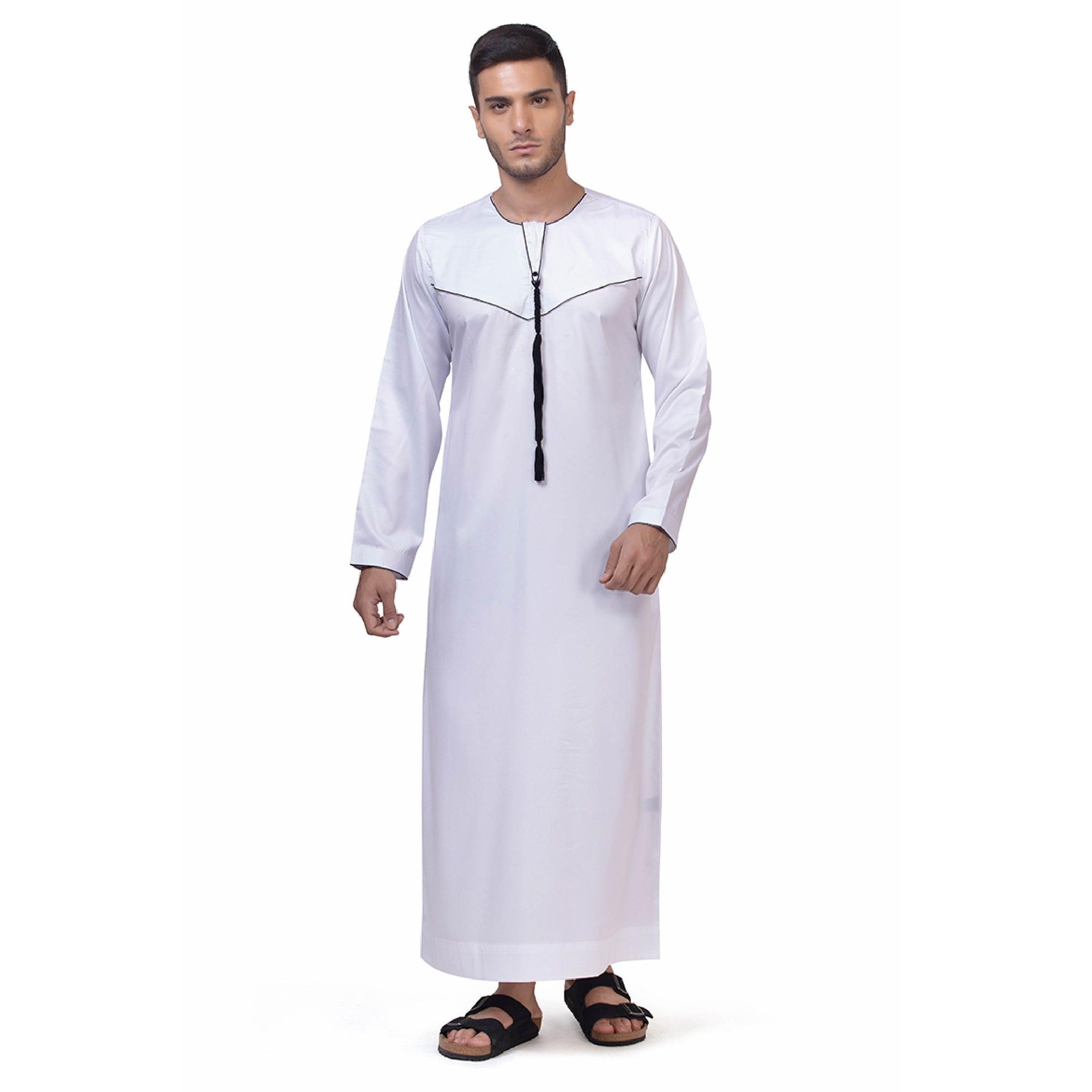
The Emirati thobe has a rich history that dates back centuries and has evolved from a traditional garment into a fashion statement on the runway. This iconic attire is worn by both men and women in the United Arab Emirates and is an essential part of the country's cultural heritage.
The thobe is a loose-fitting garment made from lightweight fabric, usually cotton or linen, to suit the hot climate of the Arabian Peninsula. Traditionally, it is white in color, reflecting the region's cultural preference for simplicity and purity. The simplicity of the thobe allows for easy movement and provides comfort in the desert heat.
For men, the thobe is usually ankle-length and has long sleeves. It is worn with a head covering called a ghutra or shemagh and held in place by an egal, a black rope-like cord. The thobe is often adorned with intricate embroidery and embellishments, showcasing the craftsmanship and attention to detail that are hallmark traits of Emirati culture.
Women's thobes, known as jalabiyas, are more elaborate and come in a variety of styles and colors. They are often decorated with intricate patterns, sequins, and beads, adding a touch of glamour to the garment. Women's thobes are typically worn with a matching headscarf or hijab.
Over the years, the Emirati thobe has undergone a transformation, making its way from traditional wear to the world of fashion. Emirati designers have taken the basic structure of the thobe and incorporated modern elements, creating unique and innovative designs.
These modern thobes can be seen on fashion runways around the world, with Emirati designers showcasing their creations alongside international brands. The fusion of traditional and contemporary elements has resulted in a diverse range of thobes that cater to different tastes and occasions.
The Emirati thobe has also gained recognition for its contribution to the sustainable fashion movement. The use of natural fabrics and traditional embroidery techniques aligns with the values of ethical and eco-friendly fashion. Emirati designers have embraced sustainable practices, ensuring that the thobe remains not just fashionable but also environmentally conscious.
Moreover, the thobe has become a symbol of national pride and identity. Emirati nationals proudly wear their traditional attire on special occasions such as weddings, national holidays, and religious festivals. The thobe serves as a visual representation of Emirati culture, showcasing its rich heritage and customs.
Additionally, the thobe has become a means of self-expression and a form of empowerment for Emirati women. Female designers have played a significant role in reimagining the thobe, incorporating contemporary elements while still preserving its cultural significance. Through their designs, Emirati women are breaking barriers and challenging traditional gender roles, promoting inclusivity and diversity in the fashion industry.
As the Emirati thobe continues to make its mark on the international fashion scene, it serves as a reminder of the rich heritage and cultural identity of the United Arab Emirates. From its humble beginnings as a traditional garment to its transformation into a fashion-forward piece, the thobe embodies the spirit of Emirati creativity and innovation. It is a testament to the enduring traditions and timeless elegance that define Emirati fashion.

